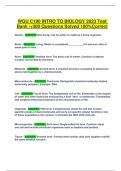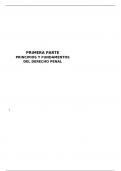Exam (elaborations)
WGU C190 INTRO TO BIOLOGY 2023 Test Bank /+300 Questions Solved 100%Correct
- Course
- Institution
WGU C190 INTRO TO BIOLOGY 2023 Test Bank /+300 Questions Solved 100%Correct lipid - ANSWER: Biological macromolecules. Fatty acids. Essential for energy storage and maintaining a boundary between the living organism and its environment. Provide energy (long term); serve as structural components of...
[Show more]




